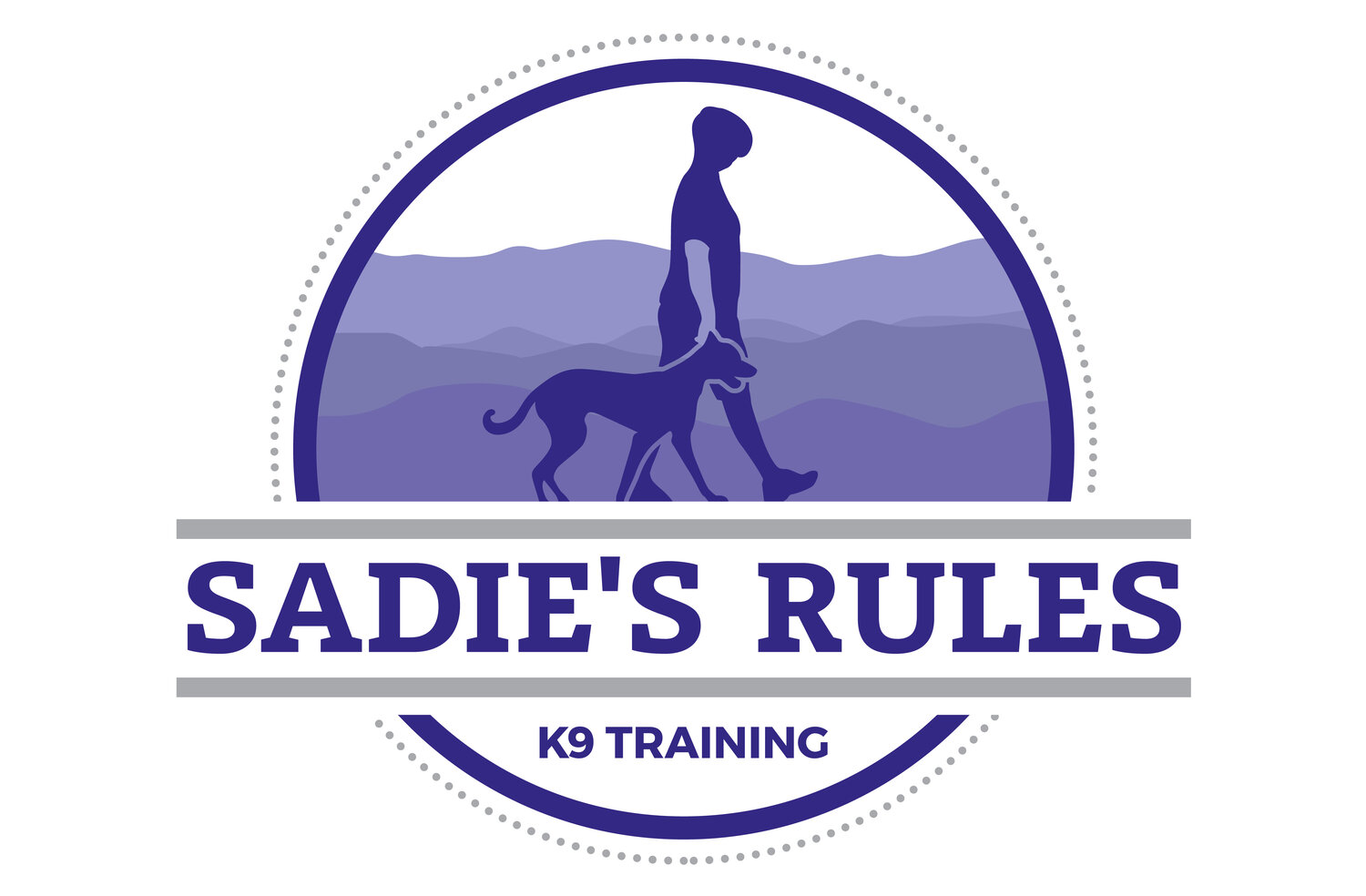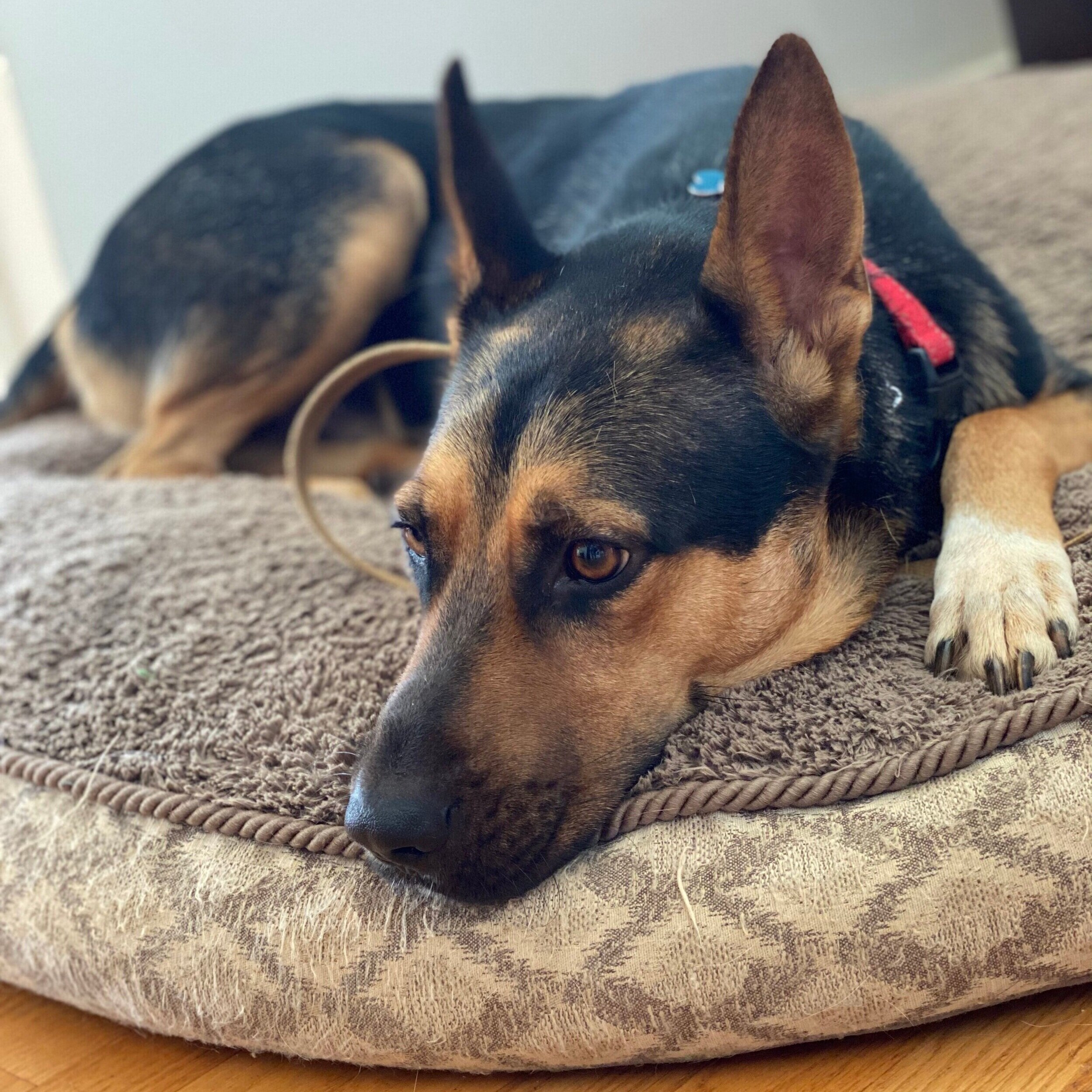This week I shared a social media post about the importance of teaching your dog what they should be doing. I used jumping on guests as an example and that seemed to really resonate with folks, so I thought I’d elaborate on that training process here. Below is a breakdown of things to think through and work on when trying to help your dog overcome a bad behavior.
Correct the Unwanted Behavior
A dog in the place command.
Although the point of my social media post this week was to encourage you to consider the other half of the training process—teaching the dog what to do—I want to emphasize that this is only one half of the training process. It is also necessary to correct unwanted behavior. It is necessary to correct (say “no”) because it gives the dog CLARITY on what we don’t want. When we opt to ignore bad behavior instead of correcting it, we’re being very unclear about which behaviors are off limits. Imagine praising your kids for staying on the sidewalk but never telling them not to run in the street. That lack of information is confusing at best and dangerous at worst. The same is true for our dogs. The communication gap between humans and dogs is wide enough as it is; we don’t need to make it worse by omitting some of the vital pieces of information! Be clear in your yes and clear in your no.
There are many ways to say “no” in a meaningful way. No looks different depending on the context. It can be a collar correction, a bonker, a Pet Corrector, etc. For a demonstration of one way to say no, I have a video on my YouTube channel that demonstrates how to correct your dog for jumping using the prong collar.
Recognize Patterns
One common mistake dog owners make when they’re trying to stop an unwanted behavior is that they fail to zoom out and see the pattern that surrounds that behavior. We often see this with greeting behavior at the door. Jumping on guests at the door is part of a pattern: Doorbell rings, dog feels a rush of arousal, dog runs to the door, dog barks/whines, guest enters, dog jumps, guests inadvertently reward the dog by greeting them. Dog owners will often tell me they’re fine with this entire pattern except they’d like to replace the jumping with a sit/stay. There are good intentions here, but this is unrealistic! The jumping behavior does not occur in a vacuum; it is related to all the other behaviors and events within the entire pattern. To truly resolve the jumping problem, we have to change the pattern that surrounds it, including the dog’s state of mind.
Build a New Behavior Pattern
Once you’ve identified how you will correct the unwanted behavior and which patterns surround it, now it is time to decide what pattern you want to replace it with. It is unreasonable (and can be unfair) to expect your dog to figure this out on his own. Keep in mind that dog behavior change is always a result of intentional human actions. You are a key part of the equation!
For a dog who jumps on guests at the door, I recommend using the place command to build a new pattern. Below is a step-by-step overview of what that looks like.
How to Use the Place Command to Address Greeting Behavior
Teach the place command. If your dog doesn't already know the place command, this will be your first step. Do not try to teach the command AND address greeting behavior at the same time. This is very confusing and very unfair. If you aren’t sure how to teach the place command there are plenty of tutorials out there. I have videos on how to teach the place command and how to troubleshoot the place command on my YouTube channel.
Begin desensitizing your dog to the triggers involved in the greeting event. I’ll use the doorbell as an example:
With your dog on place, ring the doorbell.
If your dog jumps up, correct your dog and guide him back to the place command.
If your dog holds the place command, mark that behavior with “good” or “yes” (whatever you use) and you can also reward with food.
Repeat until your dog is making good choices.
Continue randomly ringing the doorbell throughout the day over a number of days to make sure that your dog is fully desensitized to this trigger.
Once your dog can reliably hold the place command when the doorbell rings, move on to role-playing the arrival of a guest. This should be a role play and not a real scenario! It is best to have a member of the household be the “guest,” if possible. Practice greeting the pretend-guest in the same way you would if it was an actual visitor to your home so that the role play is as realistic as possible. Follow the protocol described in Step 2 to give your dog feedback on his choices.
Once the role play is going well, invite a “real” guest to come over, but choose someone who is open to assisting with your training process. Even if your dog does well, you’ll still need to be somewhat focused on your dog in order to provide feedback and/or guidance on his behavior choices.
Be consistent with this new pattern over the long haul! Once you’re through the training process, you’ll need to proactively use these new skills and patterns on a consistent basis over the long haul. Your dog is not a robot! He will still need prompting and feedback from you.

